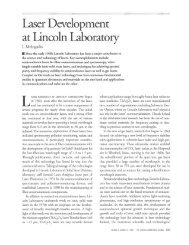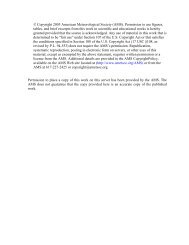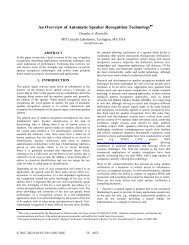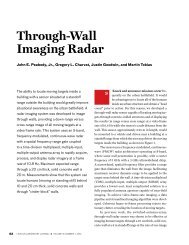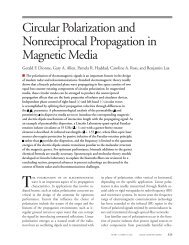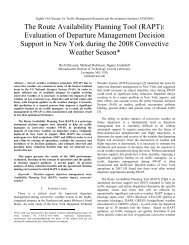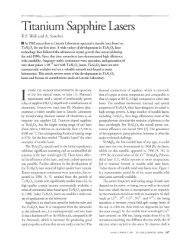Automated Flight Strip Management System Functional Description
Automated Flight Strip Management System Functional Description
Automated Flight Strip Management System Functional Description
You also want an ePaper? Increase the reach of your titles
YUMPU automatically turns print PDFs into web optimized ePapers that Google loves.
3. FUNCTIONAL OVERVIEW<br />
The <strong>Automated</strong> <strong>Flight</strong> <strong>Strip</strong> <strong>Management</strong> <strong>System</strong> is designed to provide the<br />
following functions:<br />
3.1 FLIGHT PLAN DATA BASE<br />
The ASMS will maintain a current Data Base of all flight plans and amendments for<br />
flights arriving in, departing from, or overflying the Boston TRACON airspace. These<br />
will include flight plans from the Boston Air Route Traffic Control Center (ARTCC) Host<br />
computer which comprise flight plans fIled through <strong>Automated</strong> <strong>Flight</strong> Service Stations<br />
(AFSSs) and airline "canned" flight plans, and locally derived flight plans and amendments<br />
including VFR Terminal Control Area (TCA) arrivals and departures.<br />
3.2 INTERFACES<br />
ASMS will be designed to share the interfaces being developed for the Terminal Air<br />
Traffic Control Automation (TATCA) Program that tap data from the Host and Automatic<br />
Radar Terminal <strong>System</strong> (ARTS) computers. The interface with the Host will be at the<br />
Peripheral Adapter Module (PAM) in the Boston ARTCC and will have access to messages<br />
being sent to the Logan <strong>Flight</strong> Data Input/Output (FOIO) ports in the Tower and TRACON.<br />
The ARTS interface will be at the maintenance display terminal in the TRACON and will<br />
provides real time information on aircraft (identification, beacon code, type, speed, altitude,<br />
destination, controlling position, and location) for airplanes being tracked by the TRACON<br />
radar. This will include data on aircraft without flight plans that has been entered directly<br />
into the ARTS computer by a controller. The ARTS real time data is ofinterest primarily<br />
for arriving aircraft to determine landing sequence and runway assignment. The FOIO<br />
ports have access through the Host to flight plans for arriving, departing, and overflight<br />
aircraft as well as General Information (GI) messages. The GI messages include Center<br />
Weather Advisories (CWAS) such as Significant Meteorological Information (SIGMETS),<br />
Airman's Meteorological Information (AIRMETS), and terminal forecasts, and<br />
Traffic <strong>Management</strong> Unit (TMU) advisories such as daily restrictions on traffic flow to<br />
specific airports.<br />
The ASMS will be designed to accommodate interfaces with additional airport<br />
equipment and status displays including the Airport Information Distribution <strong>System</strong><br />
(AIDS), the Low Level Wind Shear Alert <strong>System</strong> (LLWAS), Automatic Weather<br />
Observing <strong>System</strong> (AWOS), Automatic Terminal Information <strong>System</strong> (ATIS), <strong>System</strong>s<br />
Atlanta Information Display (SAIDS) computer, Digital Alimentary Setting Indicator<br />
(DASI), airport configuration input, runway visual range (RVR) measuring equipment,<br />
runway lighting status, and the computer generated airport users interface line which<br />
provides general information between the airport operator and user, etc.<br />
3.3 HUMAN FACTORS<br />
The ASMS will provide human factors engineered protocols and entry devices to<br />
allow for simple single action entry of next logical functions and to minimize the need to<br />
interrupt viewing outside the Tower cab. The system will provide CRT display images and<br />
interfaces customized to the individual controller positions. Effective interfacing with<br />
controllers requires that only the flight data needed by the position be displayed.<br />
5



